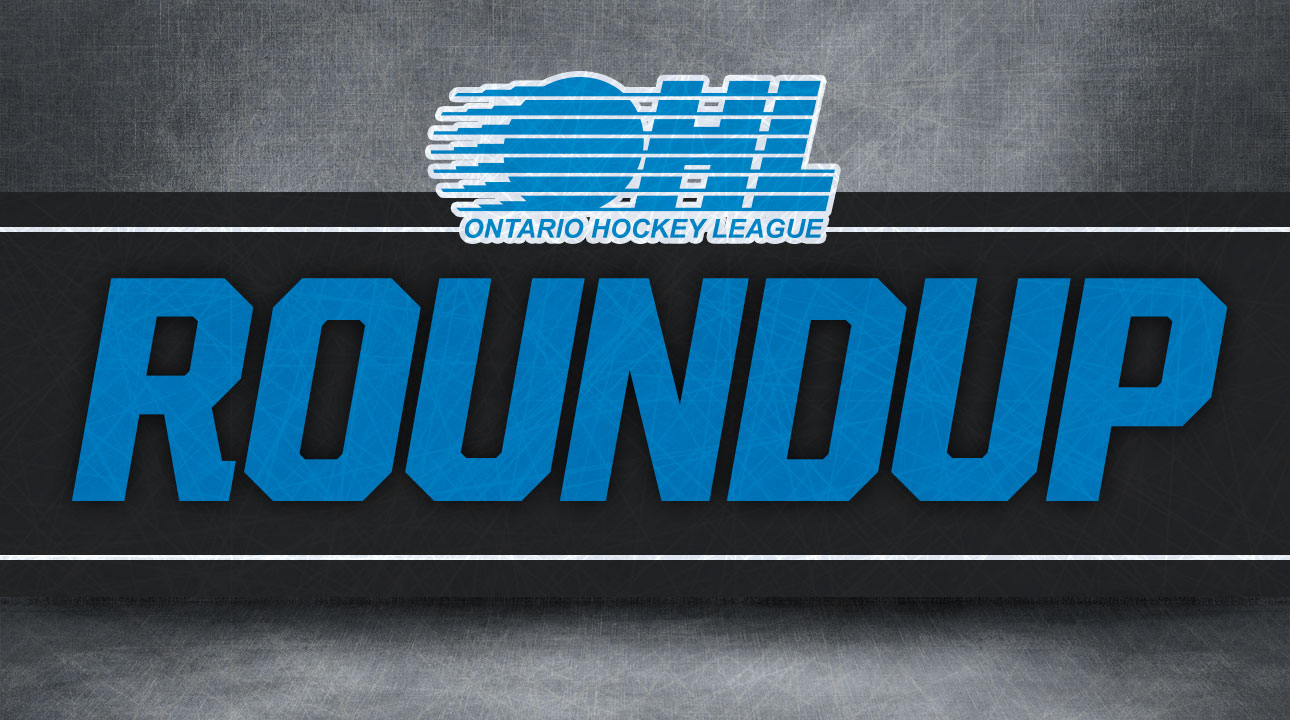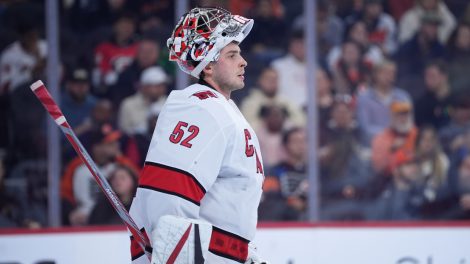One week from today, the NHL will announce the results of the expansion draft and the Vegas Golden Knights will be born. It’s an exciting time in the NHL, with the first expansion draft since 2000 and first ever held under a salary-cap system.
But while an expansion draft is a novelty for modern NHL fans, that hasn’t always been the case. This league has done an awful lot of expanding since 1967, with some decidedly mixed results. So today, let’s take a moment to look back on the various expansion drafts that came before this one, the players that were chosen, and the oddities that always seem to pop up whenever the NHL decides to welcome new members of the family.
[relatedlinks]
(Much of the information in this post was found trough the indispensable Historical Hockey blog, the HockeyDB database of expansion draft results, and hockey-reference.com.)
1967
We’ll start with the big one. The 1967 expansion draft wasn’t the NHL’s first; the league had added several teams in its earliest days, all with some sort of mechanism to stock the new franchises with players from existing teams. But it was the 1967 process that spelled the end of an era, as the league doubled in size by welcoming six new teams.
As you’d expect, adding that many teams meant that a lot of guys had to be made available. But the league’s 1967 rules were actually slightly more generous to the existing teams than the 2017 draft. Teams could protect 11 skaters and one goaltender, with exemptions for younger players, and could add players to their protected list as the draft went on. (Legend has it that Habs GM Sam Pollock personally crafted the rules to ensure the best possible result for Montreal.)
Still, with so many new rosters to fill, each of the Original Six teams was going to have to cough up a total of 20 players. Think about that the next time the GM of your favourite team moans about losing a fourth-line winger to Vegas.
As with most expansion drafts, the focus was on goaltenders; only six in the entire league were initially protected, so there were plenty of big names to choose from. That included the first-overall pick, Terry Sawchuk, who went from the Maple Leafs to the Kings (although he’d threatened to retire if he was picked), as well as Glenn Hall, who went from Chicago to St. Louis with the third pick. The skaters weren’t quite so notable, although some decent picks like Jean-Paul Parise and Bill Goldsworthy were snagged.
Best player taken: With apologies to Hall and Sawchuk, the draft’s best pick was a younger goalie; the Flyers used the second-overall pick to grab Bernie Parent from the Bruins. He’d make a detour to Toronto and the WHA before rejoining the Flyers in time to win back-to-back Conn Smythe trophies.
Notable oddity: Legendary sniper Bernie Geoffrion was technically available, but all 12 teams formed a gentleman’s agreement that he wouldn’t be taken and forced to finish his career on an expansion squad.
[snippet ID=3322139]
1970
The NHL’s next crack at expansion was a smaller one, as the Sabres and Canucks joined the league. This time, there wasn’t much to choose from, since the Original Six weren’t all that interested in helping out another wave of newcomers and the six 1967 expansion teams were all still reasonably terrible.
Only two players taken in this draft went on to score even 200 points over the remainder of their career. Gerry Meehan had 418 after being taken by Buffalo, while Mike Corrigan had 337 for the Canucks.
Best player taken: It’s probably a tossup between Meehan and Vancouver’s Orland Kurtenbach. Meehan, of course, went on to become the Sabres GM in 1986; he made the trade that brought Dominik Hasek to Buffalo. But the Sabres weren’t the only team to find a future GM in this draft, as the Canucks picked Pat Quinn with the eighth pick.
Notable oddity: The draft order was determined by the same ridiculous roulette wheel that the league infamously used (and then misread) to figure out which of Vancouver or Buffalo would get to draft Gilbert Perreault.
1972
IN 1972, the NHL welcomed the New York Islanders and the Atlanta Flames. One of those teams would become a legendary dynasty within a decade. The other would not.
This draft saw each team protect 15 skaters and two goalies, with each of the 14 established teams losing three players. That didn’t leave much for the new teams to choose from, although they did mine a few decent players like Gerry Hart and Eddie Westfall from the process.
Best player taken: The Islanders grabbed a young goaltender from the Kings who had only five games of previous NHL experience. His name was Billy Smith, and he turned out to be pretty good.
Notable oddity: The draft list looks a little strange; the first goalie and top two skaters taken were all Canadiens, but none of them were all that good. That’s because Pollock, ahead of the game as always, had cut side deals with the Islanders and Flames to take players of his choosing in exchange for future considerations.
1974
The 1974 process marked the NHL’s fourth expansion draft in eight years. While they didn’t know it at the time, it would also be their last until 1991. Sort of. More on that in minute.
The rules for this draft were similar to the 1972 edition. But by now the WHA was in full swing and actively raiding the NHL for talent, meaning there were even fewer top players available. To nobody’s surprise, the Washington Capitals and Kansas City Scouts would go on to become two of the least-successful expansion teams in sports history.
How bad was the draft? The Capitals’ top skater choice was Dave Kryskow, who had eight career goals. The Scouts’ second skater was Butch Deadmarsh, whose NHL career would last just 20 more games and three goals. Side note: His cousin would eventually end up faring a little better.
Best player taken: Uh… pass?
If we have to name somebody, Caps goalie (and future Oilers coach) Ron Low at least stuck around the NHL for another decade.
Notable oddity: The 22 players picked by the Capitals had combined for 40 NHL goals in the 1973–74 season. This is how you end up skating a garbage can around like the Stanley Cup after your first and only road win.
1979
Technically, the 1979 addition of the Oilers, Jets, Whalers and Nordiques wasn’t really an expansion; the teams came over from the WHA when the rival league finally folded. But because many of the players on those four rosters had their rights owned by other NHL teams, a complicated system was created in which some players could be reclaimed, others remained with their WHA teams, and still others were claimed by the four newcomers as part of a more straightforward expansion-style draft.
The whole thing was a mess; you can read a much more complete breakdown here. The confusion over Wayne Gretzky’s status alone is enough to give you a migraine.
Best player taken: There weren’t a lot of future stars taken in the expansion portion of the proceedings. But one name certainly stands out: Bobby Hull, who’d been reclaimed by the Blackhawks, retired, and then went back to Winnipeg as an expansion pick. He’d play just 18 games for the NHL Jets before being dealt to Hartford.
Notable oddity: The Habs pulled off the same trick that they had in 1972, this time under new GM Irv Grundman. They worked out side deals to get the WHA teams to pick the players they wanted to lose, which allowed them to hold onto future Norris winner Rod Langway.
But another side deal ended up being an even bigger move (and would eventually impact the Canadiens years down the line). The Nordiques wanted to keep WHA scoring sensation Real Cloutier, so they gave the Blackhawks a first-round pick not to reclaim him. That pick ended up being third overall, and the Hawks used it on future Hall of Famer Denis Savard.
1991
This is another weird one. The league was welcoming one new team, in San Jose. But the expansion draft involved two teams. One was the Sharks. The other was the Minnesota North Stars, who’d literally been competing in the Stanley Cup final just a few days before.
Again, it’s complicated and you can wade into the weeds here. The short version is that North Stars owners were bailing for San Jose, and were granted the right to claim a big chunk of the Minnesota roster. (That’s how San Jose wound up with early Sharks legends like Arturs Irbe and Link Gaetz.) The Sharks and Stars would then each take part in an expansion draft, picking 10 players each from the rest of the league.
As you might expect from a Cup finalist taking part in an expansion draft, the North Stars loaded up on veterans, grabbing players like Charlie Huddy, Dave Babych and Leafs captain Rob Ramage. The Sharks went a little younger, but not much.
Best player taken: You could make a case for Babych, or maybe Kelly Kisio. But honestly, the best move of the entire draft was probably the Sharks agreeing not to take Mike Craig, kicking off a chain reaction that ultimately led to the acquisition of Joe Thornton, among others.
Notable oddity: The last player picked was Guy Lafleur, who was already retired. The rules said the North Stars had to take someone from Quebec, who were terrible, and there wasn’t an option to pass, so the Stars took a guy who’d already been in the Hall of Fame for three years. But that screwed up Lafleur’s plans for a front-office job in Quebec, so the two teams had to work out a trade to send him back to the Nordiques.
[snippet id=3317857]
1992
Finally, a relatively straightforward expansion draft. Was it a good one? No. But at least Ottawa and Tampa Bay kept things simple.
Teams could protect 14 skaters and two goaltenders, but (as with this year’s Vegas draft) had to make a certain number of experienced players available. That led to a series of pre-draft trades as teams scrambled to meet the requirements. It also led to something else we’ll get to down below.
As always, the draft wasn’t all that good, and is probably best remembered for the (possibly apocryphal) story of the Senators showing up with a laptop but no spare battery, running out of juice, and having to wing their list, leading to several picks of players who weren’t actually eligible.
Best player taken: The Lightning actually found a rare expansion gem in Brian Bradley; the former Leaf would score 42 goals in Tampa’s debut season.
Notable oddity: Remember that part about teams having to expose players with a certain amount of NHL experience? For goalies, the cutoff was one game. But the rules didn’t say the experience had to be recent, and the Capitals tried to exploit that loophole by signing 1970s goalie Bernie Wolfe to a contract and exposing him. Not surprisingly, the NHL rejected the deal.
1993
The league’s decision to expand yet again — this time to Florida and Anaheim — came as the first-year Lightning were struggling and the Senators were free-falling, leading to revised protection rules designed to give the new teams a better roster. Teams could still protect 14 skaters, but it had to be nine forwards and five defencemen. More importantly, each team was now limited to protecting just one goalie.
That led to several solid netminders being picked, including Darren Puppa, Ron Tugnutt and a young Guy Hebert. Other key players chosen included Scott Mellanby, Tom Fitzgerald and Sean Hill.
Best player taken: There’s no question here. The Panthers grabbed John Vanbiesbrouck, who’d make the second all-star team and be a finalist for the Hart and Vezina in his first season in Florida. He’d lead them to the Cup final in 1996, and start in the league for eight more seasons.
Notable oddity: The draft included a second phase in which the Sharks, Senators and Lightning could pick players from the Panthers and Ducks. Only three players moved in that phase, although it’s how the Lightning ended up with Puppa, who’d become their starter and would be a Vezina finalist in 1996.
1998
After a five-year break, the league resumed its expansion plans by adding four teams in 1997. Those newcomers would join the league over the course of three seasons, with the Predators arriving first in 1998.
After the 1993 draft resulted in a flood of solid goaltenders going to the new teams, the NHL tweaked the rules to give teams a choice: protect 15 skaters and one goalie, or 10 skaters and two goalies. A few teams went with the two-goalie option, but the position was still the draft’s strongest, with the Predators taking the maximum five goaltenders.
Much like this year, the 1998 draft wasn’t really a draft at all since there was only one team participating. The Predators simply received the protected list, made their selections, and had them unveiled by the league. The draft order didn’t matter, since there were no other teams to pick against.
Best player taken: Andrew Brunette stayed in Nashville for only a year, but became the first (and so far only) expansion pick to go on to play 1,000 NHL games after being selected. But Nashville’s best pick was probably Tomas Vokoun, who’d played one game in Montreal but went on to become a consistent starter.
Notable oddity: This was back when the league had that weird free-agent compensation loophole that resulted in players like Mark Messier, Curtis Joseph and Brian Leetch being traded for a few hours. The Predators took advantage by picking Mike Richter from the Rangers even though he was a UFA. He re-signed in New York, and the Predators got a second-round pick.
(They’d use this same loophole to much greater effect in 2002 with Ed Belfour, receiving the second-round pick that they used to select Shea Weber.)
1999
Another one-team draft followed in 1999, as the Thrashers joined the league. The protected-list rules were essentially the same as the year before, with the Predators being allowed to sit the whole thing out.
The Thrashers used the draft to stock their roster with big names like Hull, Ferraro and Clark. Unfortunately, those would be Jody Hull, Peter Ferraro and Brett Clark. Three players chosen never set foot in the NHL again, and the leader in post-draft games played and points scored was Steve Staois. In related news, the 1999–2000 Thrashers were not very good.
Best player taken: Probably Trevor Kidd, who’d at least been a regular starter for Calgary and Carolina. He never played for Atlanta; they immediately flipped him to Florida for three players and a draft pick.
Notable oddity: Despite the success of the decade’s other expansion teams in picking goalies, the Thrashers took just three of the maximum five. Instead, they loaded up on defencemen, taking 10. That list included future all-star Petr Buzek.
2000
And finally we arrive at what stands, at least for the next week, as the NHL’s most recent expansion draft. We were back to two teams for this one, as the Blue Jackets and Wild entered the league, meaning draft order and strategy meant something again. The rules remained the same as the previous two drafts, and the Thrashers and Predators were exempt.
The draft got off to a great start when the Blue Jackets spent the first overall pick on Rick Tabaracci, who would never play in the NHL again. Their second pick, Frederic Chabot, wouldn’t either. Among the goalies taken, only Dwayne Roloson went on to sustained success, and he was a UFA that Columbus only agreed to take as part of a trade.
As it turns out, there was one top-tier goalie available on the draft. That was San Jose’s Evgeni Nabokov, who’d played just 11 NHL games at the time. But the Sharks cut side deals with both Columbus and Minnesota to leave him untouched, and he went on to win the Calder the next year.
Among skaters, the pickings were slim, and the teams spent some of their picks on UFAs like Matthieu Schneider who they had little chance of signing. A stunning 15 players who were taken in the draft never played in the NHL again, including nine Blue Jackets.
Best player taken: The Wild found a solid blueliner by plucking 23-year-old Filip Kuba from the Panthers.
Notable oddity: The two teams didn’t have much hope of building a good team, but they could have put together one hell of an NHL ’94 lineup. Players made available included future Hall of Famers Mark Messier, Doug Gilmour, Paul Coffey and Grant Fuhr.
Also, the Wild used their second-last pick on the brother of Skid Row’s Sebastien Bach, so they had that going for them.








